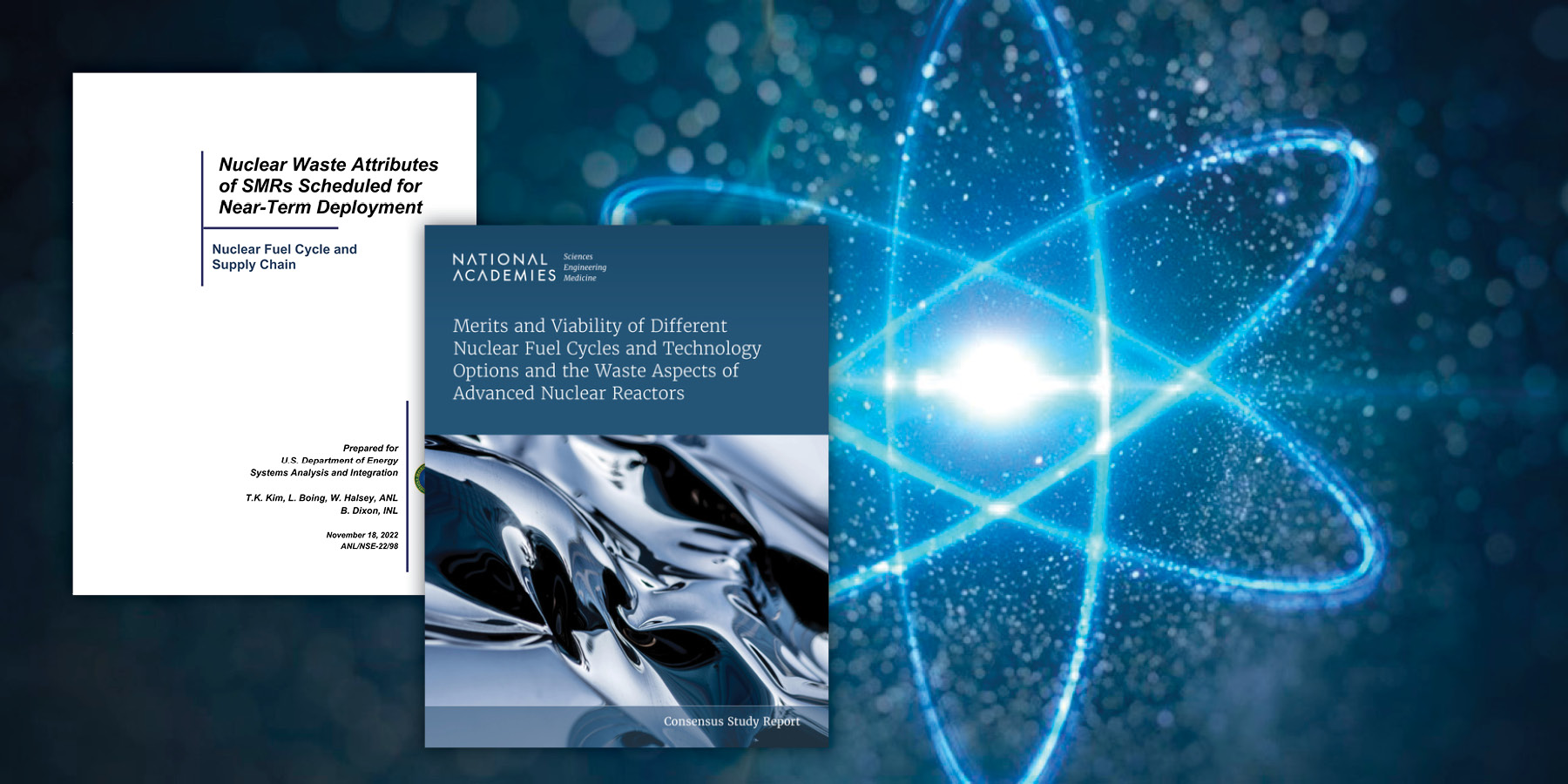The SONGS independent spent fuel storage installation. (Photo: SCE)
Spent Fuel Solutions, which advocates for a permanent disposal solution for the nation’s spent nuclear fuel, will be holding an informational webinar on Friday, September 15, from 11:00 a.m. to noon (PDT).
Monticello nuclear power plant. (Photo: Xcel Energy)
The Minnesota Public Utilities Commission (PUC) has approved Xcel Energy’s request for a certificate of need to expand spent fuel storage at the utility’s Monticello nuclear power plant.
The additional storage, according to the PUC, requires installation of a second concrete support pad and modular concrete storage system designed to hold 14 additional steel canisters.
Xcel had requested increased outdoor storage to accommodate its plan to extend Monticello’s operational life by 10 years, to 2040.
The NWMO’s Laurie Swami (left) and the DOE’s Kathryn Huff sign a statement of intent to cooperate on used nuclear fuel management in Washington, D.C., on May 16. (Photo: CNW Group/NWMO)
The United States and Canada will cooperate on spent nuclear fuel management under a statement of intent (SOI) signed between the U.S. Department of Energy and the Nuclear Waste Management Organization, the nonprofit responsible for the management of Canada’s commercial spent fuel.
A rendering of Holtec’s proposed HI-STORE CISF in New Mexico. (Image: Holtec)
The Nuclear Regulatory Commission has issued a license to Holtec International to construct and operate a consolidated interim storage facility (CISF) for spent nuclear fuel in southeastern New Mexico. Holtec is proposing building the facility, called the HI-STORE CISF, between the cities of Carlsbad and Hobbs in Lea County on land provided by the Eddy Lea Energy Alliance (ELEA).
Report author Mark Lynas and RePlanet’s Joel Scott-Halkes stand next to a canister of spent nuclear fuel at the Sizewell plant in the United Kingdom. (Photo: RePlanet)
A new report from the environmental advocacy group RePlanet makes the case for recycling used nuclear fuel for use in advanced power reactors. According to the report, What a Waste: How fast-fission power can provide clean energy from nuclear waste, by using current inventories of used fuel and depleted uranium stocks in Europe and the United Kingdom, fast breeder reactors could generate between 600 and 1,000 years of carbon-free electricity for the entire European Union.
William “Ike” White addresses the audience at INTEC, which gathered to celebrate the completion of the spent fuel wet-to-dry project at the INL site. (Photo: DOE)
At Idaho National Laboratory, Department of Energy leaders joined tribal, state, and local officials; contractors; and workers on March 28 to mark a recent milestone with the state of Idaho nearly 25 years in the making. The milestone was the completion of a spent fuel wet-to-dry project more than nine months ahead of a 1995 Idaho Settlement Agreement deadline.
A loaded MP197HB cask is prepared for departure from the Vermont Yankee decommissioning site to West Texas. (Photos: Orano TN)
The rapid changes in the nuclear energy industry over the last decade, driven in part by fluctuating energy market prices and an aging fleet of reactors, have led to the closure of multiple reactors in the United States and other countries. These closures have increased the need for larger and more efficient ways to manage low-level radioactive waste processing and transport capacities. The safe transport of radioactive material is a key component of the overall nuclear industry reliability. Though sometimes perceived as a bottleneck and costly, it is necessary to send waste material to disposal.
A 3D view of the TN Eagle used fuel cask. (Image: Orano)
Orano Group subsidiary Orano NPS announced that Swiss electrical utility Axpo has selected the company to provide its TN Eagle used nuclear fuel casks over the entire operating period of the Leibstadt nuclear power plant in Switzerland.
A rendering of ISP’s proposed interim storage facility in West Texas. (Image: ISP)
A federal appeals court rejected a lawsuit brought by environmental groups challenging the Nuclear Regulatory Commission’s licensing of a consolidated interim storage facility (CISF) for spent nuclear fuel in Andrews County, Texas. The U.S. Court of Appeals for the D.C. Circuit found that the NRC reasonably applied its hearing regulations when approving Interim Storage Partners’ (ISP) license for the facility.
An aerial view of ORNL’s main campus. (Photo: ORNL)
The Gateway for Accelerated Innovation in Nuclear (GAIN) announced the three recipients of its fourth and final round of 2022 vouchers on October 10. The vouchers were awarded to Curio Solutions, which is developing a spent fuel recycling process, and to two companies that are separately investigating advanced reactor siting—Elementl Power and the Tennessee Valley Authority (TVA). The funds for each award will go directly to Oak Ridge National Laboratory.


















